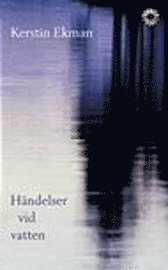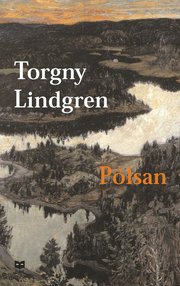 Hello all!
Hello all!Only three weeks too late, I thought I'd note down a few of the main points discussed at our last meeting, on 21st June 2011. We'd been reading Blackwater, by Kerstin Ekman. A dark, complex tale of death, and intricate deceit in Northern Sweden (well, central Sweden, technically, but once you get above Uppsala it's all 'northern'...)
The readers' reactions to the book were varied: some loved it, some were skeptical. All were struck by its bleakness, and Ekman's portrayal of nature's power, in an area of the world where the inhabitants are truly in sway to it.
In summary, the book revolves around teacher and mother, Annie Raft, and the eponymous (in the Swedish title) "Events by water". The novel is retrospectively set in the 70s, and focuses on events surrounding, and following a double murder by the Blackwater lake in Jämtland, Northern(-ish) Sweden. The many central characters in the book (a part Sami boy, Johan; the region's only doctor, Birger; the members of a goat-farming mountainside commune; and Annie's daughter, Mia) weave a web of intrigue that is only unravelled very late in the novel, long after the community itself has dissolved.
 The victims of the murder are two tourists, visiting Northern Sweden to explore its forested wilderness, captured by the strange beauty of cold lakes and high mountains. They are discovered by Annie Raft, herself new to the region, as she and her young daughter Mia scrabble through the forest in the twilight of Midsummer's Eve, searching for the commune where they are to start anew away from the turmoil of their lives in Southern Sweden.
The victims of the murder are two tourists, visiting Northern Sweden to explore its forested wilderness, captured by the strange beauty of cold lakes and high mountains. They are discovered by Annie Raft, herself new to the region, as she and her young daughter Mia scrabble through the forest in the twilight of Midsummer's Eve, searching for the commune where they are to start anew away from the turmoil of their lives in Southern Sweden.But the physical darkness of the forest, and the metaphorical darkness of those living in its shadow quickly take their toll. Miscommunication, or perhaps, rather, the total lack of communication, become increasingly central, as the murder case remains unsolved. Johan is whisked away to the residence of a mysterious cult in Norway, Birger's relationship with his wife crumbles, the commune gradually disperse from their perch on Star Mountain's frozen slopes, and Annie realises her beautiful lover is not all he seems.
Ekman tensely describes the claustrophobia of the forest, intertwining the names of flowers and birds unfamiliar to an English reader among the branches of birch trees and the babblings of crystal clear brooks. She renders the imposing progress of the forest clearing machines, changing the landscape, and its inhabitants' lives for ever, with far-reaching consequences for community and ecosystem.
This is a powerful book, one that deals with humans' impact on the environment, on themselves, and on each other. For me, and a number of the readers, the overall effect was one of estrangement. Most people said they found it difficult to relate to a single one of the characters. Indeed, this seems to be Ekman's intention, only adding to the importance of the overpowering presence of nature, surrounding and shutting off each character, until not even the reader can reach them.
________________________________________
Feel free to add any comments below, especially if you think I've missed out something we discussed, or if anything ese has occured to you since we met!




